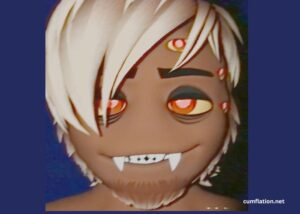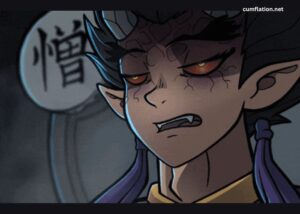Walrider – Exploring the Swarm’s Role in Outlast

The Walrider, also known as the Swarm, is a mysterious and terrifying force in the Outlast series. Its role is central to the horror, as it drives the madness infecting the asylum’s inhabitants. Created by Red Barrels, this entity is not just a supernatural antagonist but a deity for Father Martin and his followers. Understanding the Walrider’s role reveals the depth of Outlast’s storytelling and the chilling power it holds over its characters.
Key Points:
- The Walrider is a crucial antagonist in Outlast.
- It influences the mental state of the asylum’s inhabitants.
- Father Martin’s followers worship it as a deity.
What Is the Walrider in Outlast?
The Walrider, or the Swarm, is an enigmatic force made of nanites controlled by a human host. This host—Billy Hope in the first Outlast game—undergoes extreme physical and mental torture to synchronize with the nanites. Once the connection is complete, the Swarm becomes an unstoppable, ghost-like force.
The Walrider’s presence is evident throughout Mount Massive Asylum, where its influence drives the patients to insanity. This insanity manifests as violence, paranoia, and worship of the entity. The asylum’s corrupted environment, paired with the experiments of the Murkoff Corporation, creates a perfect storm for the Walrider to thrive.
Comparison Chart: Walrider’s Key Characteristics
| Aspect | Description |
| Nature | A swarm of nanites |
| Controlled By | Human host (e.g., Billy Hope) |
| Primary Abilities | Superhuman strength, intangibility, flight |
| Impact on Asylum | Causes madness, inspires worship |
| Connection to Murkoff | Created via unethical experiments |
Reminder: The Walrider’s origins are deeply tied to the Murkoff Corporation’s experiments.
How Does the Walrider Influence the Asylum?
The Walrider’s influence extends far beyond physical destruction. It creates an atmosphere of terror, bending the minds of its victims. The inhabitants of Mount Massive Asylum display symptoms of psychological manipulation, including violent outbursts and hallucinations. This manipulation is not accidental; it’s a direct consequence of the experiments conducted to create the Swarm.
Father Martin, a key figure in the game, interprets the Walrider’s presence as divine. He establishes a cult-like religion around it, encouraging the asylum’s patients to worship the Swarm as a savior. This belief intensifies the chaos and makes the Walrider even more powerful through collective fear and reverence.
In gameplay, players encounter notes and recordings that highlight the asylum’s descent into madness. These documents reveal the extent of the Walrider’s grip on both the patients and the staff. For example, one staff member’s log shows a sudden shift from skepticism to outright worship of the entity, showcasing its psychological power.
Table: Effects of the Walrider on Asylum Inhabitants
| Type of Impact | Examples from the Game |
| Psychological Manipulation | Hallucinations, violent behavior |
| Religious Influence | Formation of Father Martin’s cult |
| Physical Effects | Unexplained injuries, enhanced aggression |
| Environmental Changes | Destruction of infrastructure, eerie atmosphere |
Note: Understanding these effects adds depth to the horror experience.
What Is Father Martin’s Role in the Walrider’s Story?
Father Martin’s character is central to the Walrider’s mythos. He sees the Swarm as a divine being, sent to cleanse humanity of its sins. This belief drives his actions throughout the game, influencing not just the patients but also the protagonist.
Martin’s sermons and writings suggest that he views the Walrider’s destruction as a necessary step for redemption. He manipulates the protagonist, Miles Upshur, into participating in his religious vision. This manipulation demonstrates the cult-like power that the Walrider holds over its followers.
An example of Martin’s influence is seen in the murals and writings scattered across the asylum. Phrases like “The Gospel of Sand” and “God is Real” point to the deep psychological grip that the Walrider has, amplified by Martin’s fanaticism.
Father Martin’s death, staged as a form of martyrdom, further solidifies his devotion to the Swarm. He believes his sacrifice will pave the way for the protagonist to fulfill the entity’s purpose. This moment is one of the most haunting in the game, as it demonstrates the extremes of religious fervor tied to the Walrider.
How Does the Murkoff Corporation Connect to the Walrider?
The Murkoff Corporation is directly responsible for the creation of the Walrider. Their unethical experiments in Project Walrider aimed to push the boundaries of science and human potential. By using a Morphogenic Engine, the company hoped to harness the power of nanotechnology to create a controllable superhuman entity.
However, the experiments went horribly wrong. The synchronization process between host and Swarm caused immense physical and mental strain, leading to madness. Instead of controlling the Walrider, Murkoff inadvertently unleashed a force they could not contain.
Players encounter various documents throughout the game that reveal the corporation’s knowledge of the risks involved. These files detail failed experiments, cover-ups, and the escalating chaos within the asylum. For example, a report on Billy Hope’s progress reveals the chilling methods used to create the Walrider, including sleep deprivation and extreme psychological stress.
Murkoff’s disregard for ethics is a recurring theme in Outlast, highlighting the dangers of corporate greed and unchecked scientific ambition. Their actions not only created the Walrider but also led to the asylum’s complete collapse.
Reminder: The Murkoff Corporation’s experiments show the dangers of unchecked scientific ambition.
Why Does the Walrider’s Story Resonate With Players?
The Walrider’s story is more than just a horror trope; it’s a reflection of human fears about science, power, and control. Its connection to real-world issues like unethical experiments and religious fanaticism adds layers of meaning to the narrative. Players are drawn to this complexity, making the Walrider one of the most memorable antagonists in gaming.
The sense of vulnerability experienced by players is another factor. As Miles Upshur, you are powerless against the Walrider’s supernatural abilities. This dynamic creates a feeling of dread and immersion, as every encounter with the Swarm becomes a fight for survival.
The game’s use of environmental storytelling enhances this resonance. From blood-stained walls to cryptic notes, every detail immerses players in a world shaped by the Walrider’s presence. The result is a narrative that stays with players long after the game ends, encouraging them to explore its deeper meanings.
What Makes the Walrider Unique Among Horror Antagonists?
The Walrider stands out because it merges science fiction and supernatural horror seamlessly. Unlike traditional ghosts or monsters, it is a product of advanced technology gone wrong. This blend of genres sets it apart and makes it more believable within the game’s universe.
Its connection to the human psyche also adds to its uniqueness. The Walrider doesn’t just kill its victims; it manipulates their minds, turning them into instruments of its will. This psychological angle makes it more terrifying, as it exploits human vulnerabilities.
Furthermore, the Walrider’s design and movement create an unsettling presence. Its ghostly form, combined with the eerie sound effects, heightens the tension in every encounter. Players are left constantly on edge, knowing they are being hunted by an entity that defies logic and reason.
Conclusion
The Walrider’s role in Outlast is multifaceted, serving as both a physical and psychological antagonist. Its creation by the Murkoff Corporation, its influence over the asylum, and its worship by Father Martin’s followers make it a deeply compelling force in the game’s narrative. By blending science fiction with religious themes, Red Barrels has created a horror experience that stays with players long after the credits roll.
The Walrider’s story is a cautionary tale about the dangers of ambition, faith, and the unknown. It challenges players to confront their fears and question the ethics of scientific exploration, leaving a lasting impression that goes beyond the realm of gaming.
FAQ’s
- What is the Walrider in Outlast?
The Walrider is a swarm of nanites controlled by a human host, serving as the main antagonist in the game. - Who created the Walrider?
The Murkoff Corporation created the Walrider through unethical experiments involving the Morphogenic Engine. - What does Father Martin believe about the Walrider?
Father Martin believes the Walrider is a divine being and leads a cult that worships it. - How does the Walrider affect the asylum’s inhabitants?
It drives them to madness, violence, and religious fanaticism.
Why is the Walrider significant in Outlast?
The Walrider’s story adds depth to the horror, blending themes of science and religion to create a chilling antagonist.




